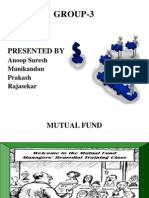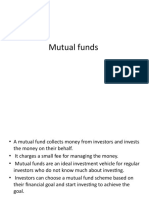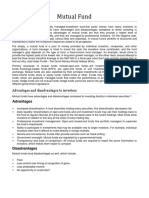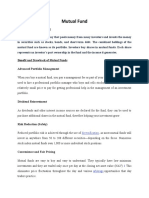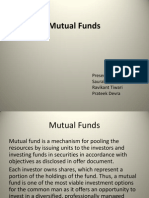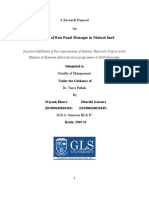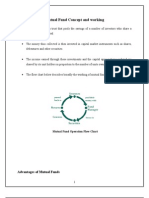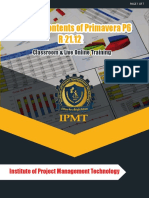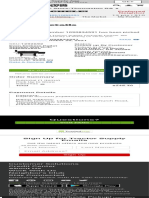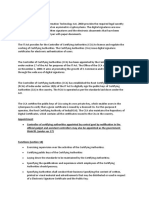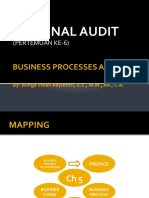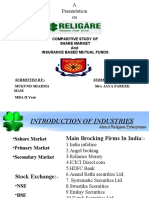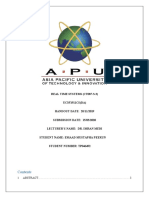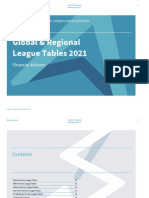CHAPTER
04
INTRODUCTION TO STRUCTURED ILPS
WORKING OF AN INVESTMENT-LINKED POLICY (ILP)
Insurance
Part of the premiums
is used to buy term
insurance to provide
Balance of the
premiums is
invested into ILP
sub-funds as
selected by the Term
policy owners.
Insurance
ILP sub-funds
+
Unit Trust
IMPORTANT CONCEPTS DEFINITIONS/EXPLANATIONS
Structured ILP • A “structured ILP” is typically a single premium ILP where the sub-funds
are invested in structured products or other structured funds.
• Because they are life insurance policies, only a life insurer may issue
ILPs, and the terminology follows that for insurance products.
Characteristics of a structured ILP • Purchased with a single payment.
• Fixed policy term or maturity date.
• Usually has complex structures.
• Exposed to counterparty, credit default, market, foreign currency,
liquidity risks etc.
Payout under a structured ILP • Death benefits.
• Maturity / Survival benefits.
• Other structures possible.
COMMON TERMINOLOGY OF A STRUCTURED ILP
Single premium The one-time upfront payment which the policy owner pays for the policy.
It represents his principal sum of investment in the policy.
Regular premium Periodic premium payments (monthly, quarterly, half-yearly or yearly).
Policy owner Owner of the policy who is also the investor.
Sum assured The guaranteed amount of death benefit payable.
13
�Cash value Amount which the policy owner receives if he terminates the policy. Also
called surrender value. It is the market value of units in ILP sub-funds.
Benefit illustration A year-by-year illustration of the benefits and values of the insurance
policy, both guaranteed and non-guaranteed, and the costs and charges
associated with the policy, including distribution costs, and the charges for
insurance coverage.
Subscription The purchase of units in ILP sub-funds
Redemption The return of units in ILP sub-funds for cash.
Bid price Price at which units are redeemed.
Offer price Price at which units are subscribed.
Bid / offer spread Difference between the bid and offer prices, usually in the range of 3% to
5%. This is the insurer’s fees for operating the sub-funds. This is separate
from the investment management fees which are charged directly to the
sub-funds monthly or quarterly, based on the assets under management
(AUM) by the investment managers. The insurer may manage the sub-
funds in-house, or outsource the investment management to third-party
managers.
Forward pricing Subscription and redemption of units are based on bid and offer prices
as determined on the next asset valuation date. This is in contrast with
historic pricing, which uses bid and offer prices determined on the last
asset valuation date.
Net asset value Total value of fund assets, less total liabilities (NAV) excluding policy
owners’ interest if this is classified as a liability).
Both assets and liabilities are valued in accordance with the insurance
regulations and other applicable regulatory requirements.
Switching of funds The transfer of units in one sub-fund to another.
Expense ratio The ratio of the sub-fund's operating expenses to the daily average NAV.
For Singapore domiciled funds, the calculation of expense ratio should
follow guidelines as issued by the Investment Management Association of
Singapore (IMAS).
Operating expenses include investment management fees, trustee’s fees,
administrative and custodial expenses, taxes, legal fees, and auditing fees.
Trading expenses related to the buying and selling of fund assets are not
included in the calculation of expense ratio.
Initial sales charges and redemption fees, if any, are paid directly by
investors and, therefore, not included in expense ratio.
Turnover ratio The number of times that a dollar of assets is reinvested in a given year.
It is calculated based on the lesser of purchases or sales of underlying
investments of a fund expressed as a percentage of daily NAV averaged
over the same period used for calculating expense ratio.
Trading incurs transaction costs. Therefore, the higher the turnover, the
higher will be the transaction cost, which reduces the fund returns.
For example, a stock index fund typically has a low turnover ratio, but
an equity fund typically has high turnover, because active trading is an
inherent nature of equity investments. An aggressive small-cap growth
stock fund will generally experience higher turnover than a large-cap value
stock fund.
Soft dollar This refers to arrangements under which products or services, other than
the execution of securities transactions, are obtained from or through a
broker in exchange for the direction by the manager of transactions to the
broker. Soft dollars include research and advisory services, economic and
political analyses, portfolio analyses, market analyses, data and quotation
services, and computer hardware and software used for and / or in
support of the investment process of managers (as per MAS Notice 307).
14
�IMPORTANT CONCEPTS DEFINITIONS/EXPLANATIONS
Advantages of structured ILP • Professional Management.
• Portfolio Diversification.
• Access To Bulky Investments.
• Economies Of Scale.
Disadvantages of structured ILP • Fees And Charges – added cost of protection benefits as compared to
unit trusts.
• Loss Of Investment Control.
• Opportunity Cost to invest monies elsewhere.
Risk considerations for structured • Counterparty risk.
ILP • Liquidity risk.
Examples of structured ILP • Product providing regular payouts (such as quarterly or yearly).
• Product linked to index return.
• Product with capital appreciation potential.
Who should invest in structured • Investors who are seeking capital appreciation with a medium to high
ILP? tolerance for some losses on capital.
- In addition to looking for • Investors who are interested in specialty investment areas (such as
insurance protection. hedge funds and private equity), but do not have sufficient experience,
knowledge, resources or access to invest in such niche areas alone.
Who should NOT invest in • Investors who does not understand the features of a structured ILP.
structured ILP? • Investors with a low risk tolerance.
• Investors who do not fully understand the “risk and return” trade-off of
the product.
Governance • Financial Advisers Act (2001).
• Insurance Act (1966).
• Code on CIS (the “Code”).
• Notice No: MAS 307.
Risks to address with investment • Liquidity risk
guidelines for retail funds Only liquid investments and those subject to reliable and verifiable
valuation on a daily basis.
• Concentration risk
Capped at certain % on the fund’s net asset value.
• Credit risk on securities lending
Borrower credit risk, collateral deficiency risk, settlement risk,
investment of cash collateral risk and fund liquidity risk.
• Counterparty risk on OTC transactions
Capped at certain % of the fund’s net asset value.
• Financial derivatives
Must be liquid; subject to reliable and verifiable valuation on a
daily basis and able to be sold, liquidated or closed by an offsetting
transaction at any time at their fair value.
Other restrictions for retail funds • With the exception of property funds, funds should not invest in
infrastructure and real estate.
• Funds should not engage in lending of moneys or granting guarantees,
underwriting, and short selling, except arising from derivatives
transactions.
• Fund name should be clear and not misleading.
Point-of-sale disclosure • Product summary.
• Benefit illustration.
• Product highlights sheets (PHS).
Disclosure at policy inception • Policy document.
• Fees and charges.
• Subscription and redemption of units.
• Switching of sub-funds.
• Conditions for suspension of dealings.
After sales disclosure • Policy statements.
• Fund reports.
• Semi-Annual report.
• Audit report.
15
�Value of ILP sub-fund • Value of an ILP sub-fund is based on the NAV of the sub-fund. The only
exception is a capital guaranteed fund, whose value upon maturity is
the higher of the NAV and the guaranteed amount.
• If price is not representative or not available to the market, the NAV
should then be based on “fair value” of the assets.
16
